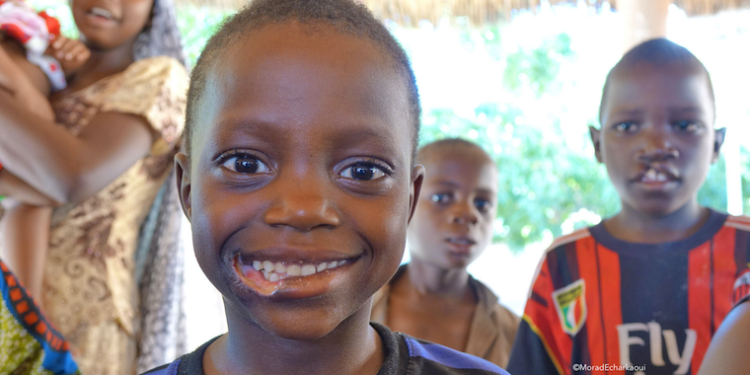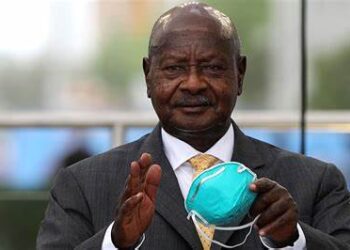By THE OBSERVER UG
Victims of false teeth. Photo: thenormaproject.org
The World Health Organization (WHO) on Friday announced the inclusion of noma disease in its official list of neglected tropical diseases (NTDs).
The decision was recommended by the 17th meeting of the Strategic and Technical Advisory Group for Neglected Tropical Diseases. The decision has been welcomed because it is likely to expand health services to the world’s most vulnerable populations.
Noma or cancrum oris affects the face, eating the soft tissues and often destroying the bones completely. Sometimes it destroys the nose or even the eyes. This complication has been mainly common in West Africa. No wonder the Nigerian government and some activists from Nigeria and Côte d’Ivoire among others have been campaigning to have it listed among the World’s Neglected Diseases.
Studies in countries where it is prevalent, indicate that it affects mainly children under the age of seven. Malnutrition, a lack of vaccinations, poor oral hygiene, and poverty have been listed among the many contributing factors to noma.
WHO director-general, Dr. Tedros Adhanom Ghebreyesus said noma is more than a disease, it is a social marker of extreme poverty and malnutrition, affecting the most vulnerable populations.
“By classifying noma as a neglected tropical disease, we are shining a light on a condition that has afflicted marginalized communities for centuries. We are committed to working with affected countries and communities to address the drivers of noma, and alleviate the suffering it causes,” said Ghebreyesus.
According to WHO, noma is a severe gangrenous disease of the mouth and face, that primarily affects malnourished young children (aged between 2 and 6 years) in regions of extreme poverty. It starts as an inflammation of the gums, which, if not treated early, spreads quickly to destroy facial tissues and bones.
It frequently leads to death, with survivors suffering severe disfigurement. Accurate estimation of the number of noma cases is challenging due to the rapid progression of the disease and the associated stigma, which contributes to leaving many cases undiagnosed. Cases of noma are mostly found in sub-Saharan Africa, although cases have also been reported in the Americas and Asia. In Uganda, studies have linked this complication to false teeth (ebiino/ebinyo) extraction.
A study published in 2017 in the Journals of Case Reports said: “False teeth” (ebiino/ebinyo) refers to gingival swelling that occurs during the eruption of the primary canine teeth in infants and consists of the extraction of deciduous canine tooth buds. This practice, which is part of infant oral mutilation, is relatively common in African countries with an incidence that varies from place to place, ranging between 15 per cent and 80 per cent, especially in Angola, Tanzania, Somalia, Kenya, Sudan, Nigeria, and Uganda.
The study further states that the practice arises from the belief that these “killer” canines cause fever, diarrhea, and any other infant illness, thus necessitating their removal, usually by traditional herbalists using unclean instruments and fingernails.
In Bushenyi district in western Uganda, a study showed that more than one in two of the households had a child younger than 5 years old who had had false teeth in the last 5 years as of 2007, with more than 80 per cent of the respondents using traditional medicine alone or in combination with modern medicine to treat “false teeth disease.
The National Oral Health Policy developed by the ministry of Health does not however mention noma. Evidence from WHO indicates that noma is caused by bacteria found in the mouth. There are multiple risk factors associated with this disease, including poor oral hygiene, malnutrition, weakened immune systems, infections, and extreme poverty.
Noma isn’t contagious but tends to strike when the body’s defenses are down. Early detection is essential, as therapy is most effective at the early stages of disease when it causes severe swollen gums, known as acute necrotizing gingivitis. Treatment involves antibiotics, advice and support on practices to improve oral hygiene with disinfectant mouthwash (salt water or chlorhexidine could be used) and nutritional supplements.
If diagnosed during the early stages of the disease, treatment can lead to proper wound healing without long-term consequences. In severe cases though, surgery may be necessary. Children who survive the gangrenous stage of the disease are likely to suffer severe facial disfigurement, have difficulty eating and speaking, face social stigma and isolation, and need reconstructive surgery.
The recognition of noma as an NTD aims to amplify global awareness, catalyse research, stimulate funding, and boost efforts to control the disease through multisectoral and multi-pronged approaches. Interventions addressing the burden of this devastating disease will contribute to achieving universal health coverage, as they will specifically target pockets of underserved populations.
Noma is often managed by oral health programmes in endemic areas and collaboration with NTD programmes at the operational level can be strengthened, notably by integrating noma within the activities aimed at detecting and managing skin-related neglected tropical diseases (skin NTDs).
The Government of Nigeria spearheaded action to have noma included in the list of NTDs. In January 2023, an official request was submitted to WHO on behalf of 32 member states. The request was supported by a detailed dossier highlighting the burden and distribution of noma and providing evidence to demonstrate fulfillment of the criteria set by WHO.
Several partner institutions contributed by sharing information and conducting advocacy. With noma now on the list, the total number of NTDs listed by WHO are twenty-one.







Discussion about this post